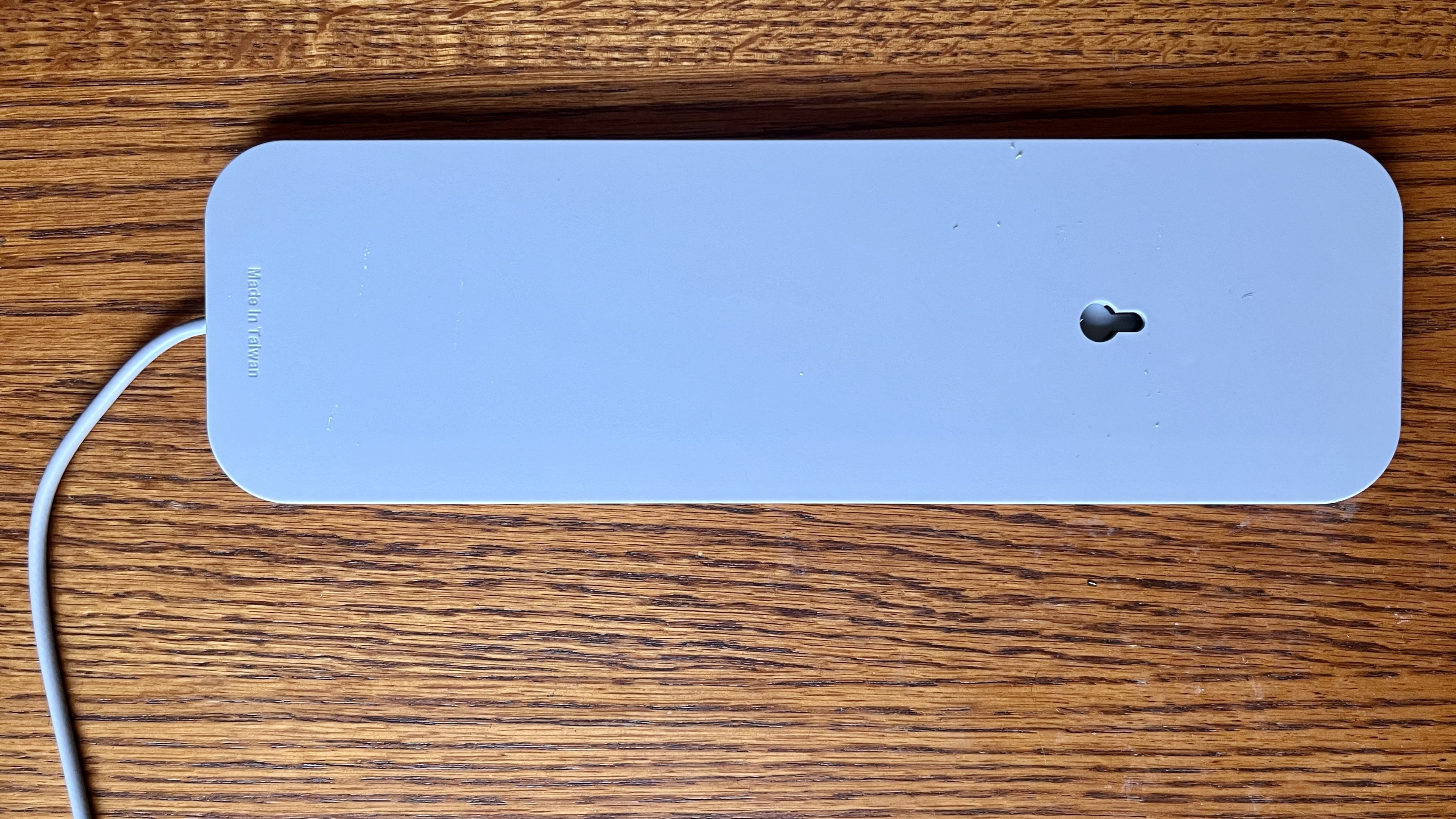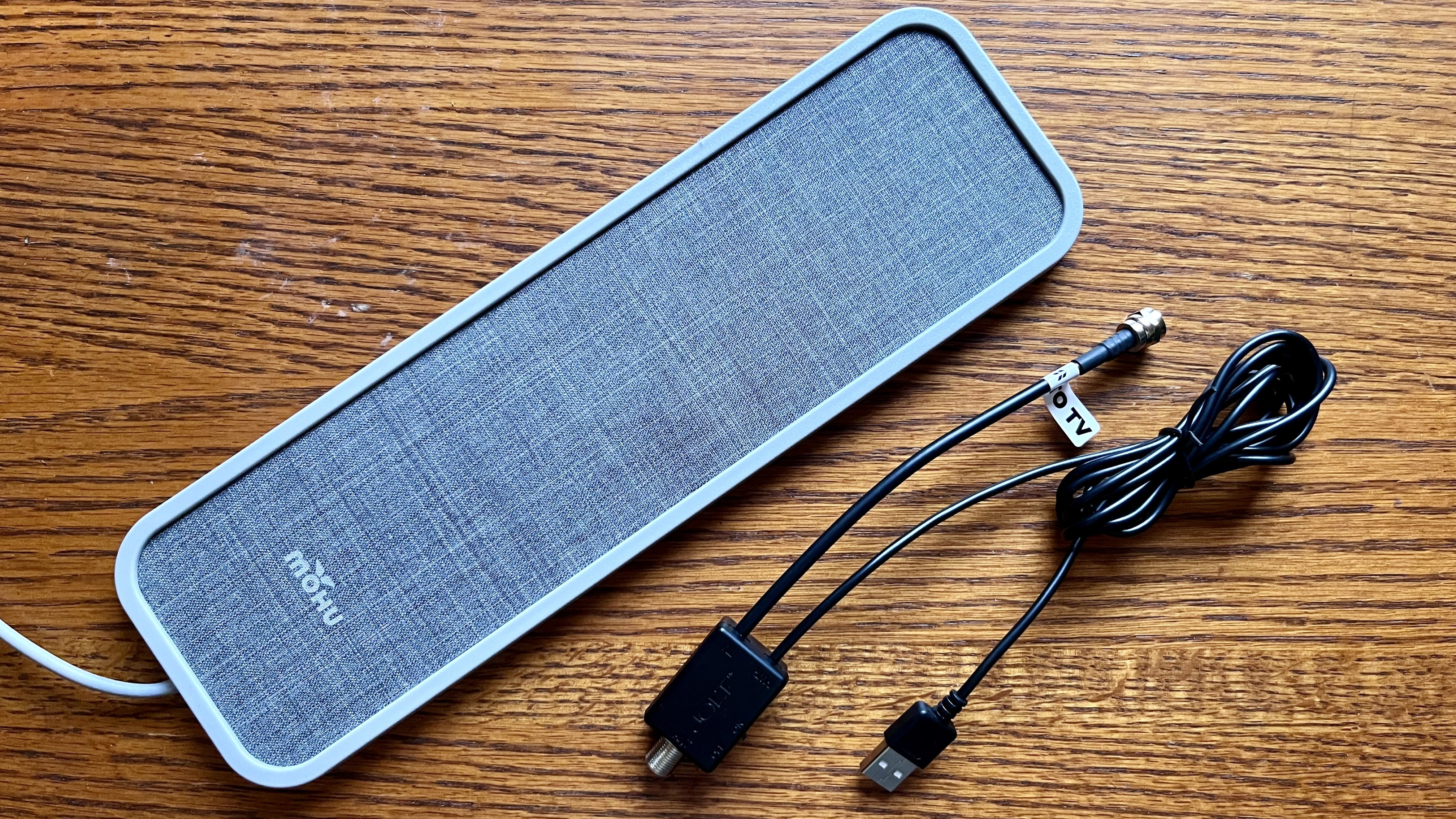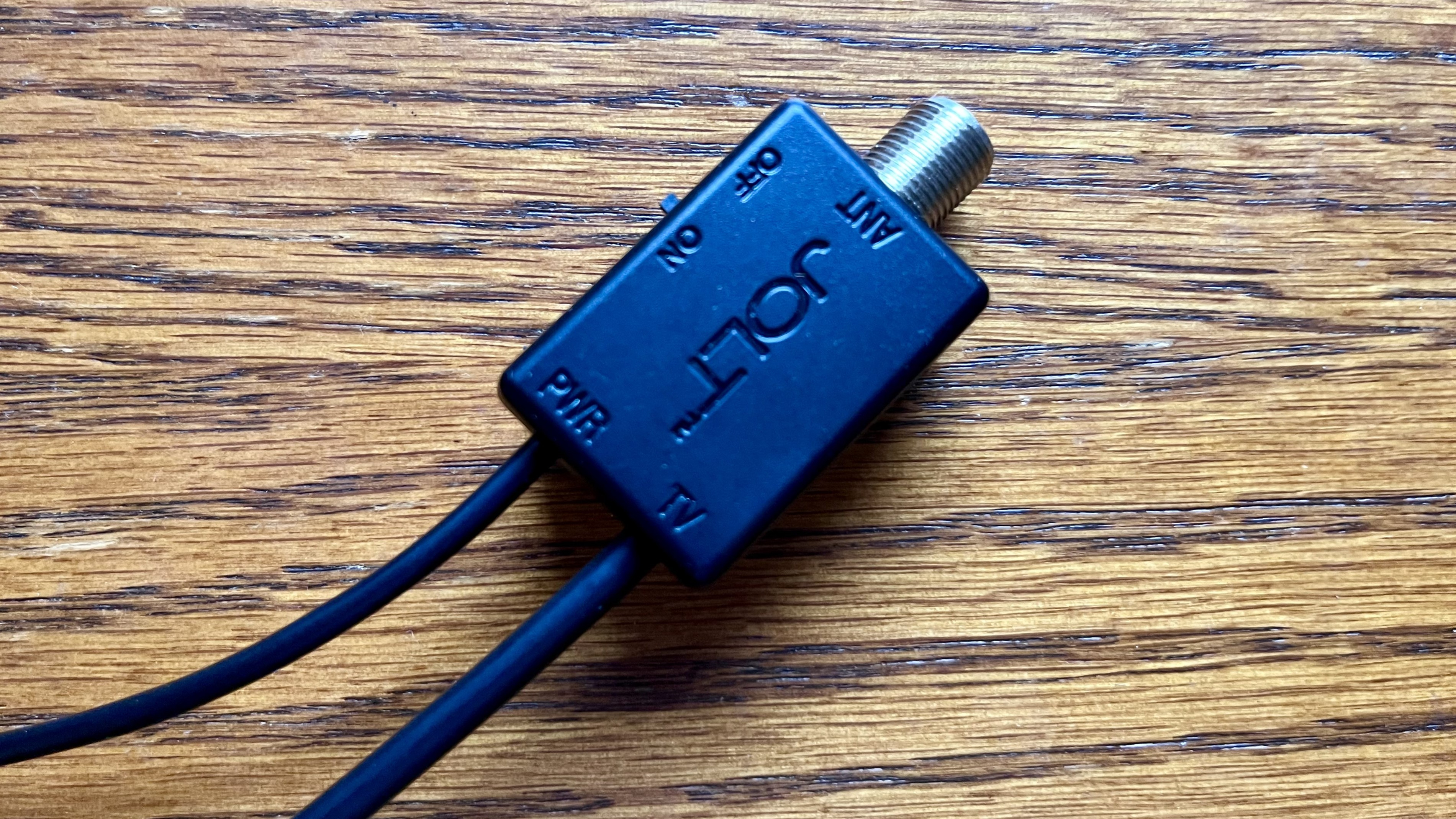Mohu Vibe: Two-minute review
Table of Contents
The Mohu Vibe indoor TV antenna is unlike most other TV antennas in that it actually looks good. Only three things about the best indoor TV antennas really matter: Does it pull the stations you want at your location? Is its size and style compatible with your room? Is its price/performance in your range?
Mohu’s new Vibe claims a 50-mile range; it sports a decor-friendly form factor (about the size and shape of a supermarket sushi tray) and a discreet gray tweed-like finish, and at a $50 list-price – typically sold for half that amount – it’s going to fit a lot of budgets.
Setup couldn’t be easier: you can hang the Vibe on a picture hook or a screw (Mohu provides the latter, plus a sheetrock anchor), or do as I did and use double-sided tape (not supplied) against a window pane or smooth wall. A captive 12-foot cable leads from the antenna to the “Jolt” amplifier module – about the size of a box of TicTacs – but the coax whip from the amp is only six inches, so unless you supply your own, longer coaxial extension cable you’ll have to site the antenna within two arm-spans of your TV. A second cable attaches the amplifier to a USB port for power. This one is much longer, in case the TV has no free USB jack (you have to supply your own USB charger).

Visually, the Vibe is about as unobtrusive as an antenna can get: it could be a motion sensor, or at a stretch, an arts & crafts decoration. As to performance, first our usual disclaimer, and it’s a very important one to understand and accept: Any TV antenna’s real-world reception depends enormously on two factors: its elevation, and what obstructions, natural or man-made, intervene between it and the desired signal(s) transmission towers. So our results, as always, represent one location only, and a pretty idealized one at that: a semi-rural spot at about 700 ft. above sea level, in a second-story window with a clear line-of-sight southeast, from whence a variety of signals emanate from the east, south, and southwest, at distances ranging from 17 miles to more than 75.
In this arrangement, the Mohu Vibe pulled in 27 stations (9 primary channels, such as 5.1, and 18 sub-channels like 27.2, 56.4, and so on). This is about 25% fewer than we obtained from Mohu’s slightly larger and bulkier Arc model – but note that atmospheric conditions will vary results from day to day and time to time. (In truth, antenna technology really hasn’t changed much since the Eisenhower years.) Only the one weakest station (a lower-power one a bit north of east, and thus well off the Vibe’s aimed axis) suffered the occasional picture blocking of a marginal signal strength; the others were all rock solid.
The Vibe should perform well in typical suburban and urban locations, and, given some elevation and lack of obstructions, even in more rural/distant locations, like our test site.

Mohu Vibe: Price and release date
- First available: September 2023
- Price: $49.99
The Mohu Vibe’s $50 list price is reasonable, given its somewhat more attractive form and finish. (A seemingly perpetual 20% off deal cuts the price to around $40, and we’ve seen it for $25.) That said, there are myriad competing antenna designs, in a dizzying range of shapes, sizes, and forms, that will probably perform similarly, for prices from a bit less to a whole lot more.

Should you buy the Mohu Vibe?
| Attributes | Notes | Rating |
| Features | Very compact, attractive form; supplied RF amplifier powered by USB | 4.5 / 5 |
| Performance | Impressive pulling ability for small size should serve well up to 20-40 miles in typical locations, or considerably more from elevated, unobstructed ones | 4.5 / 5 |
| Design | Small, attractive gray-tweed on-wall packaging should blend easily in most rooms | 5 / 5 |
| Value | Very competitive | 4.5 / 5 |
Buy it if…
Don’t buy it if…
Mohu Vibe review: Also consider

How I tested the Mohu Vibe
- Tested at semi-rural location
- Compared with powerful “reference” antenna
I test indoor TV antennas at a semi-rural, hilltop location with good elevation and a clear line-of-sight over nearly 360 degrees to TV transmitters ranging from about 15 to about 70 miles. This testing environment gives me the ability to evaluate models catering to a full spectrum of indoor antenna needs.
For the testing process, I first place the antenna high up in a south-facing window and run the tuning process on a TV with an ATSC 3.0 “next-gen TV” tuner. I then record the number of carriers tuned, along with the total number of sub-channels. A powerful inside-the-attic rooftop-type antenna at the same location is also used as a reference for comparison.
Read more about how we test
First reviewed August 2024

























